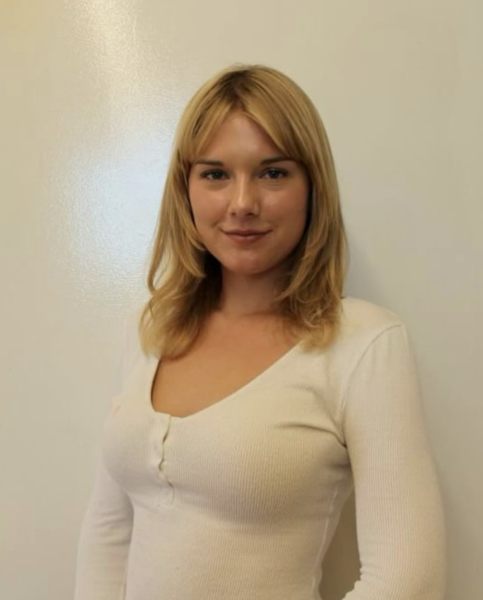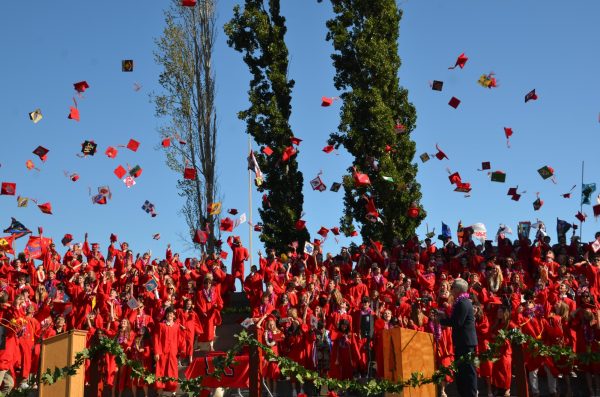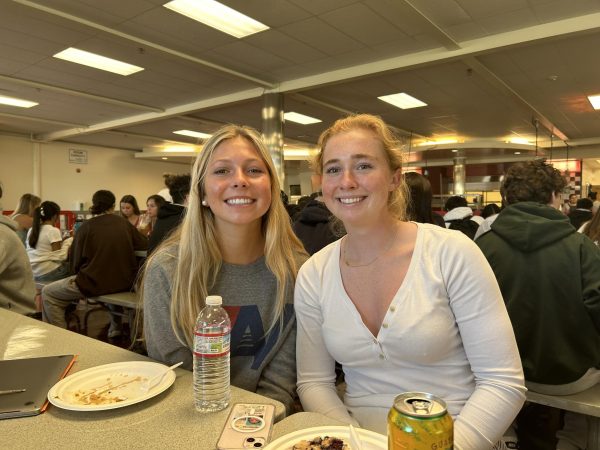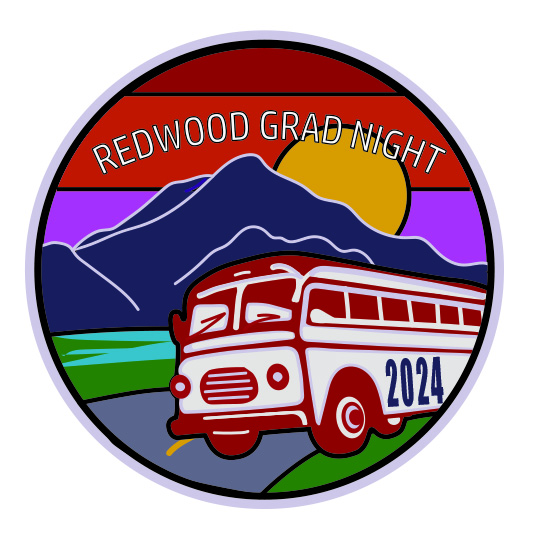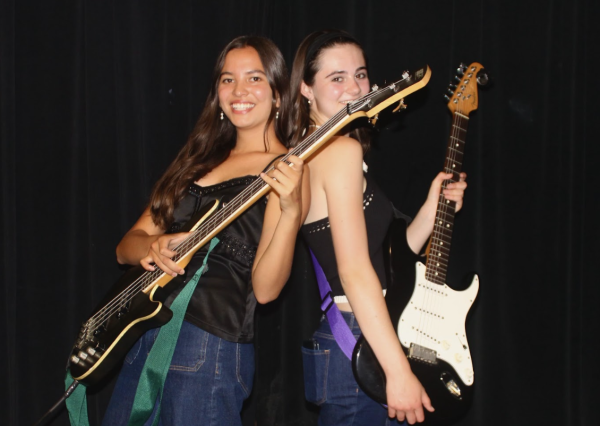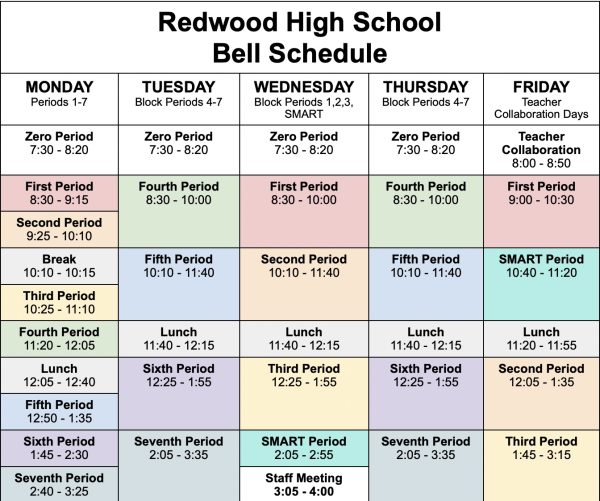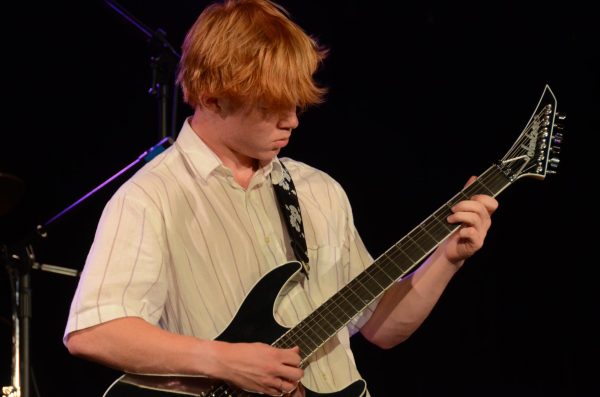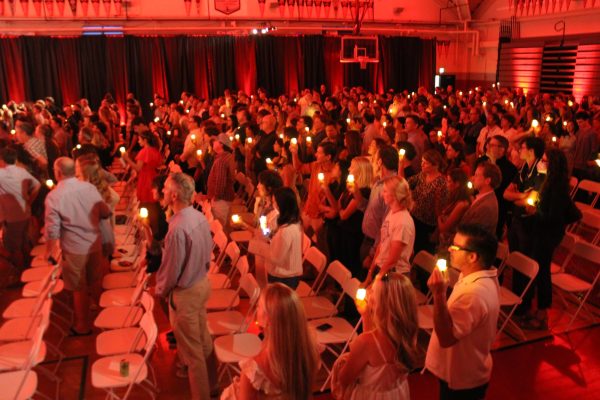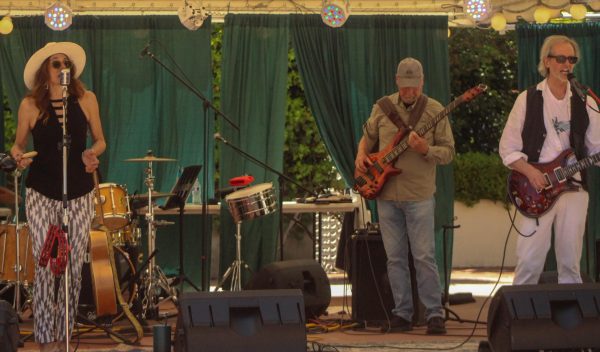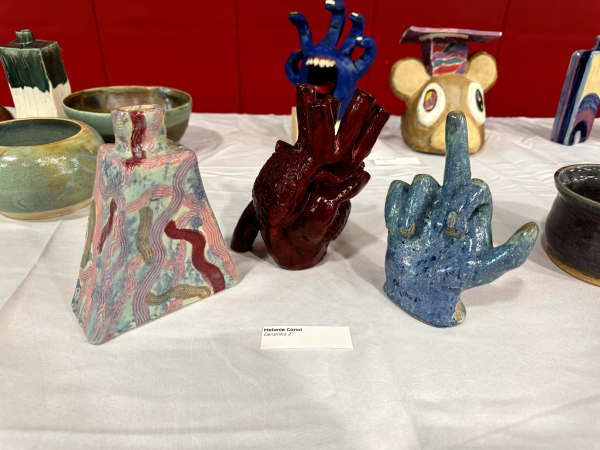Spanish classes learn the traditional melodies of Brazil, Samba
May 22, 2023
The melodic and rich harmonies of drums could be heard throughout Redwood on Friday, May 19, during fourth and fifth periods, as students were taught the traditional music of Samba. Samba, a popular music and dance genre that originated in Brazil, utilizes Afro-Brazilian culture and has become an icon of Brazilian national identity. Samba is known for its rhythmic, folk beats and drumming techniques. It also incorporates dance that involves intricate footwork and lively performances.
Jorge Bezzra is a native Brazilian who learned the art of Samba at a young age and, since 1993, has conducted workshops on Samba ensembles in the United States. He recently came to Redwood to give students from various Spanish classes a Samba experience.
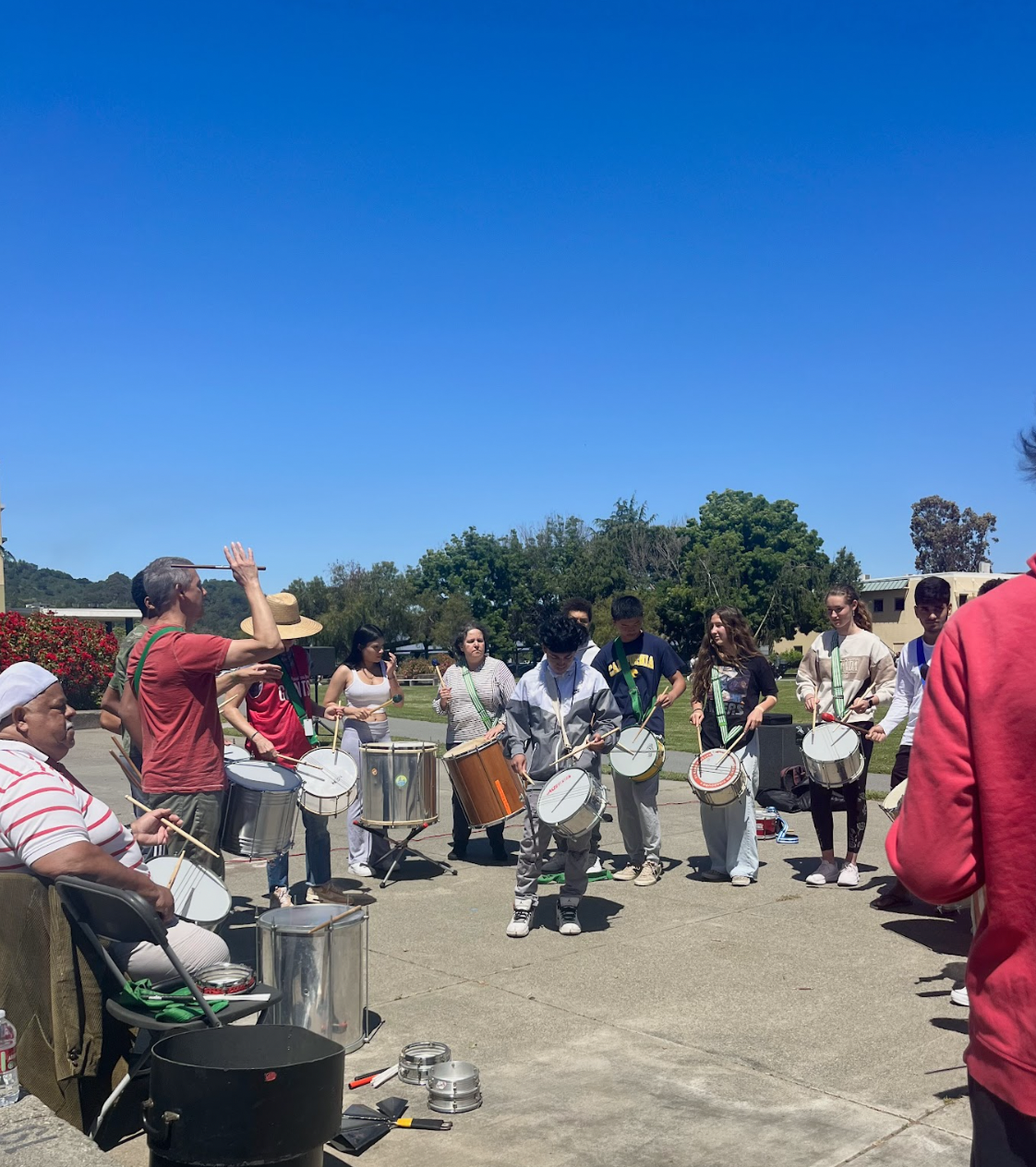
“This is my life. It is the Brazilian culture, which includes Samba and other Brazilian rhythms,” Bezzra said. 
Bezzra is connected with the oldest Candomblé house, Casa Branca, in Brazil. He is known as an “Alabê,” meaning he obtained the highest level in drumming and leading rituals in the Candomblé religion, which signifies deep experience and authority.
“[Teaching Samba] makes me proud. I learned everything as a kid. My kids grew up doing the same thing. Now I have three kids who are musicians,” Bezzra said. “I grew up learning the Samba to teach people [and] to pass it to others.”
A friend and work companion of Bezzra for 25 years, Brian Rice is a Brazilian and Cuban music specialist. He is one of the most versatile percussionists in the Bay Area, and he helped facilitate the Samba ensembles at Redwood. Rice has had a lot of experience with Samba music and is passionate about sharing his knowledge through teaching.
“At [University of California (UC)] Davis and [UC] Berkeley, I teach ensembles. I run the Brazilian ensemble [and] Afro-Cuban ensemble. At UC Berkeley, I teach labs associated with an ethnomusicology class. [The students] learn about the history of Brazil,” Rice said.
Rice has worked with and studied Brazilian culture and is passionate about bringing his experience to different schools. Rice is the director of the Samba School at UC Davis, which is a dancing, marching and drumming club that emphasizes the importance of Brazilian culture where they perform high-energy music from Brazil’s annual Carnival celebration for audiences throughout Northern California. Rice has worked with and studied Brazilian culture and is passionate about bringing his experience to different schools. Due to Rice’s varied experiences appreciating and spreading Brazilian culture through his work, he finds great importance in his teachings and felt it was important to introduce them to Redwood students.
“The students seemed enthusiastic, and they all jumped to grab instruments and try them out; it’s nice to expose younger people to this music because it is culturally and musically interesting, and it is something that people are not used to,” Rice said.
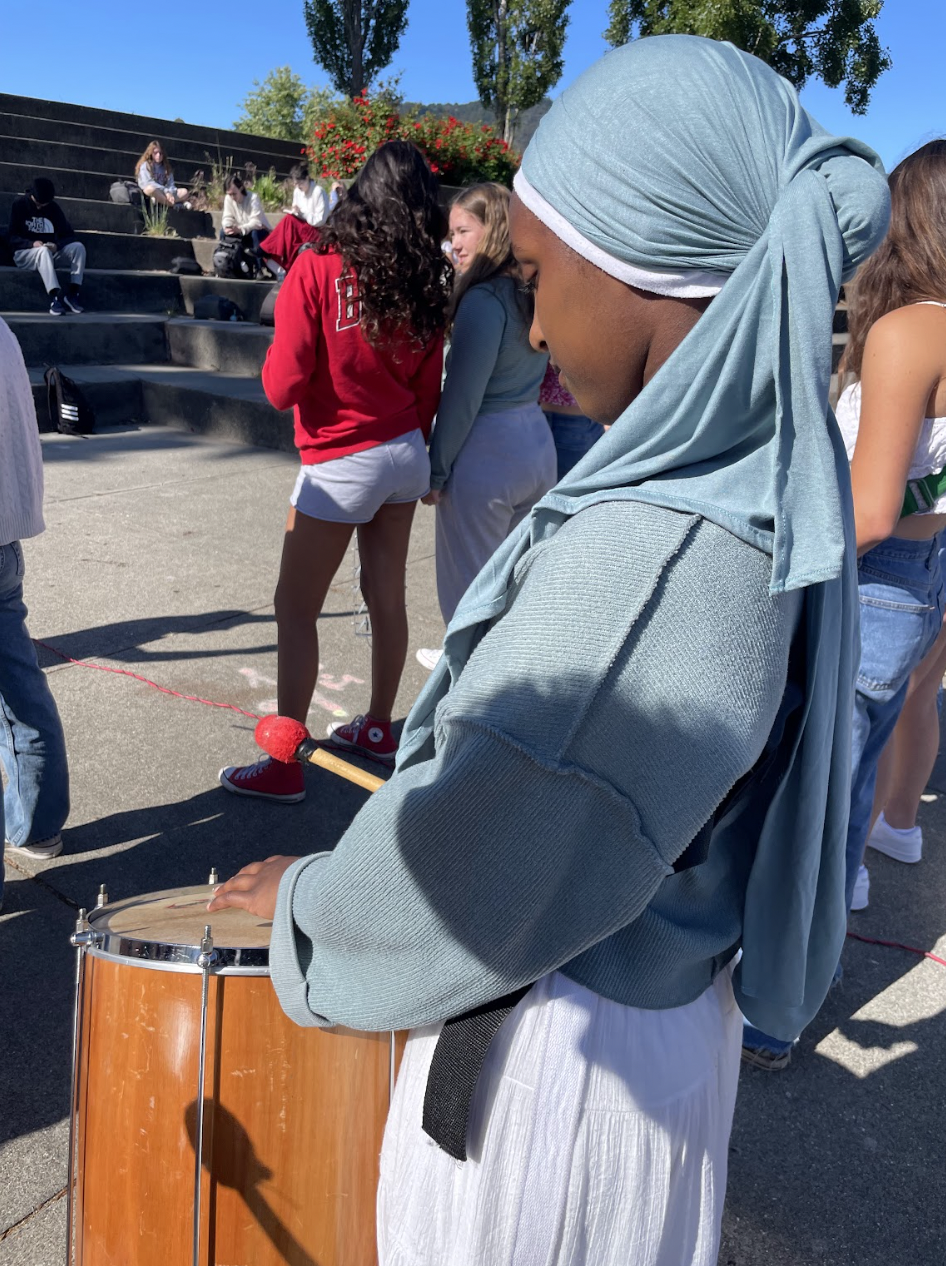
Alison Do Carmo, a Spanish teacher at Redwood who learned about Samba while living in Brazil, invited Bezzra to bring this unique experience to students after getting a grant approved by the Tamalpais Unified High School District (TUHSD) Board.
“The Samba music for me is very grounded, but it’s also really light and very happy,” Do Carmo said. “All music is a language. And if we can play together, we’re a community.”
The layers of Samba, which use musical rhythms and call-and-response techniques, provide depth that engages participants through a collaborative ensemble. Thanks to Do Carmo’s outreach to Bezzra’s workshop program, that aspect is now at Redwood.
“ We put everything together to make a beautiful harmonica. This is called Samba,” Bezzra said.

